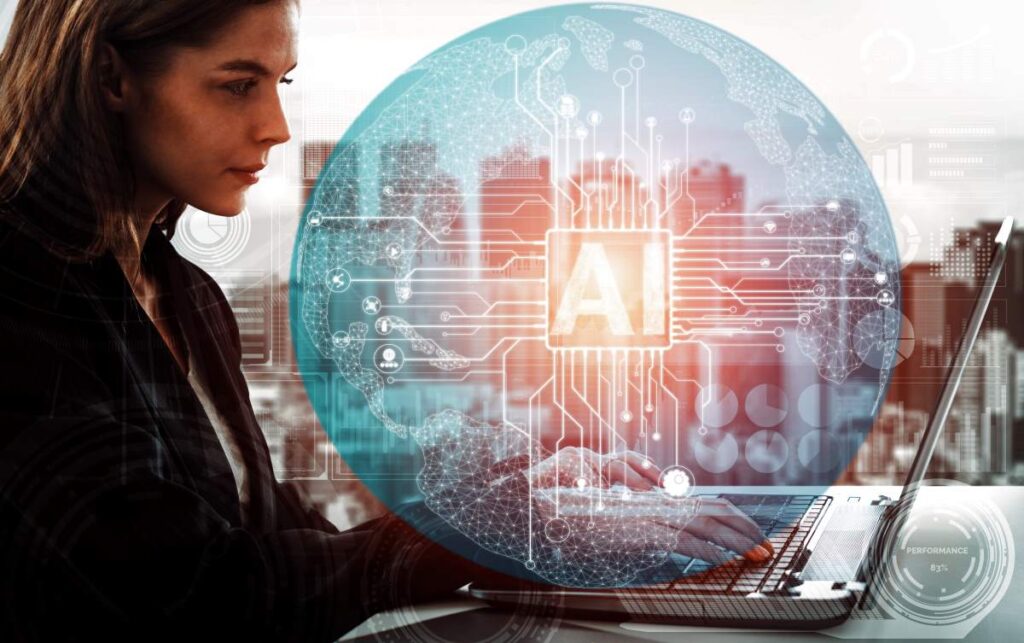In recent years, the integration of artificial intelligence (AI) in graphic design has revolutionized the creative process, making it more efficient and innovative than ever before. The term AI in Graphic Design: How Software Is Changing The Creative Process encapsulates the profound impact that advanced algorithms and machine learning techniques have on design workflows. From automating repetitive tasks to generating unique design concepts, AI tools are reshaping the landscape of graphic design, enabling designers to focus on creativity and strategy rather than mundane tasks.
As you delve deeper into this article, you will discover how AI-powered software is enhancing collaboration among design teams, streamlining project management, and providing valuable insights through data analysis. We will explore various AI tools that are currently making waves in the industry, showcasing their capabilities and the benefits they bring to both novice and experienced designers. Additionally, we will discuss the ethical considerations and challenges that come with the adoption of AI in creative fields, ensuring a well-rounded understanding of this transformative technology.
By the end of this article, you will not only gain insights into the current trends in AI and graphic design but also learn how to leverage these tools to elevate your own creative projects. Whether you are a graphic designer, a marketing professional, or simply an enthusiast of design technology, this exploration of AI’s role in graphic design promises to be both informative and inspiring. So, let’s embark on this journey to uncover the future of creativity!
Artificial Intelligence (AI) is revolutionizing the graphic design industry by streamlining workflows and enhancing creativity. As designers increasingly adopt AI tools, the creative process is evolving in ways that were previously unimaginable. This article explores various aspects of how AI is transforming graphic design.
Automation of Repetitive Tasks
One of the most significant impacts of AI in graphic design is the automation of repetitive tasks. Designers often spend a considerable amount of time on mundane activities such as resizing images, adjusting colors, or formatting layouts. AI-powered software can handle these tasks efficiently, allowing designers to focus on more creative aspects of their work. For instance, tools like Adobe Sensei utilize machine learning algorithms to automate image editing processes, significantly reducing the time spent on these tasks.
By automating repetitive tasks, designers can enhance their productivity and creativity. This shift not only improves workflow efficiency but also allows designers to experiment with new ideas and concepts without the burden of time-consuming tasks. As a result, the creative process becomes more dynamic and innovative, leading to unique design solutions.
Enhanced Design Personalization
AI technology enables designers to create highly personalized designs tailored to individual user preferences. By analyzing user data and behavior, AI can suggest design elements that resonate with specific audiences. This capability is particularly valuable in marketing and advertising, where personalized content can significantly improve engagement rates.
For example, AI-driven platforms can analyze social media trends and user interactions to recommend color schemes, typography, and layouts that are more likely to appeal to target demographics. This level of personalization not only enhances user experience but also helps brands establish a stronger connection with their audience, ultimately leading to better conversion rates.
AI-Driven Design Inspiration
Finding inspiration is a crucial part of the creative process, and AI tools are making this easier than ever. AI algorithms can analyze vast amounts of design data, including color palettes, styles, and trends, to generate unique design ideas. Platforms like Canva and Designhill leverage AI to provide designers with inspiration based on current design trends and user preferences.
This AI-driven approach to inspiration allows designers to explore new styles and concepts that they may not have considered otherwise. By providing a diverse range of design options, AI helps to break creative blocks and encourages designers to think outside the box, ultimately enriching the creative process.
Improved Collaboration and Feedback
Collaboration is essential in graphic design, and AI tools are enhancing this aspect by facilitating better communication and feedback among team members. AI-powered platforms can streamline the review process by automatically generating feedback based on design principles and user experience guidelines. This feature allows designers to receive constructive criticism quickly, enabling them to make necessary adjustments efficiently.
Moreover, AI can help in managing project timelines and ensuring that all team members are on the same page. By automating task assignments and tracking progress, AI tools foster a more collaborative environment, ultimately leading to higher-quality design outcomes.
Predictive Analytics for Design Trends
AI’s ability to analyze data extends to predicting design trends, which can be invaluable for graphic designers. By examining historical data and current market trends, AI can forecast upcoming design styles and preferences. This predictive capability allows designers to stay ahead of the curve and create designs that are not only relevant but also innovative.
For instance, AI tools can analyze social media platforms, e-commerce sites, and design portfolios to identify emerging trends. By leveraging this information, designers can make informed decisions about their projects, ensuring that their work resonates with contemporary audiences and stands out in a competitive market.
Accessibility in Design
AI is also playing a crucial role in making graphic design more accessible to a broader audience. With the development of user-friendly AI design tools, individuals without formal design training can create professional-quality graphics. These tools often come with intuitive interfaces and automated features that guide users through the design process.
This democratization of design empowers more people to express their creativity and share their ideas visually. As a result, the graphic design landscape is becoming more diverse, with a wider range of voices and perspectives contributing to the creative process.
Ethical Considerations in AI Design
As AI continues to influence graphic design, ethical considerations are becoming increasingly important. Issues such as copyright, originality, and the potential for bias in AI algorithms must be addressed to ensure that the creative process remains fair and equitable. Designers must be aware of the implications of using AI-generated content and strive to maintain their unique artistic voice.
Furthermore, the reliance on AI tools raises questions about the future of human creativity in design. While AI can enhance the creative process, it is essential for designers to strike a balance between leveraging technology and preserving their artistic integrity. Engaging in discussions about these ethical considerations will help shape the future of graphic design in an AI-driven world.
The Future of AI in Graphic Design
The future of AI in graphic design is promising, with continuous advancements in technology paving the way for even more innovative tools and applications. As AI becomes more integrated into the design process, we can expect to see further enhancements in automation, personalization, and collaboration. The potential for AI to revolutionize the creative process is immense, and designers who embrace these changes will likely thrive in the evolving landscape.
In conclusion, AI is not just a tool for graphic designers; it is a catalyst for change that is reshaping the creative process. By understanding and leveraging the capabilities of AI, designers can enhance their work, foster collaboration, and create designs that resonate with audiences in meaningful ways.
| Aspect | Description |
|---|---|
| Introduction | AI is revolutionizing graphic design by automating tasks, enhancing creativity, and streamlining workflows. |
| Automation of Repetitive Tasks | AI tools can handle repetitive tasks such as resizing images, formatting layouts, and generating variations, allowing designers to focus on more creative aspects. |
| Enhanced Creativity | AI can suggest design elements, color palettes, and layouts based on current trends and user preferences, inspiring designers and expanding their creative horizons. |
| Personalization | AI algorithms analyze user data to create personalized designs that cater to specific audiences, improving engagement and effectiveness. |
| Collaboration Tools | AI-powered collaboration tools facilitate communication and feedback among team members, making the design process more efficient. |
| Predictive Analytics | AI can analyze past design performance to predict future trends, helping designers make informed decisions and stay ahead of the curve. |
| Challenges | Despite its benefits, AI in graphic design raises concerns about originality, job displacement, and the need for human oversight in creative processes. |
| Conclusion | AI is transforming graphic design by enhancing creativity and efficiency, but it is essential to balance technology with human intuition and artistry. |



